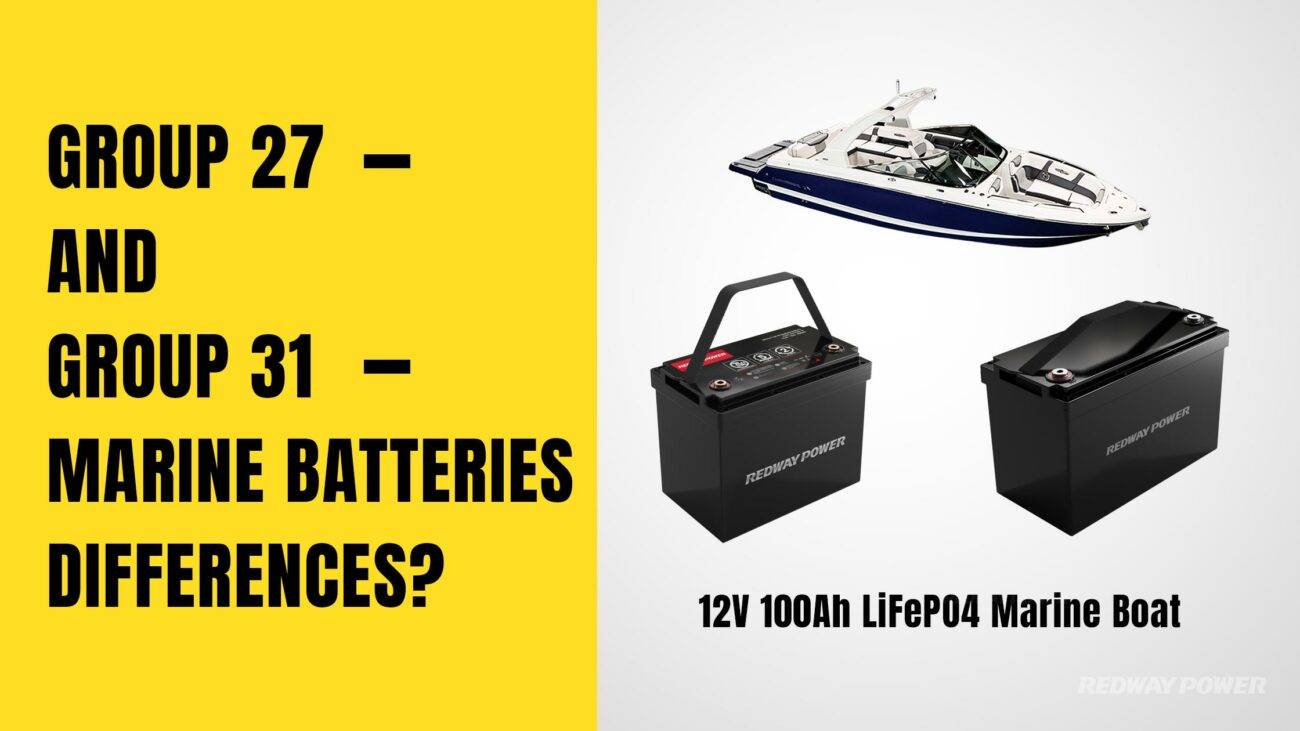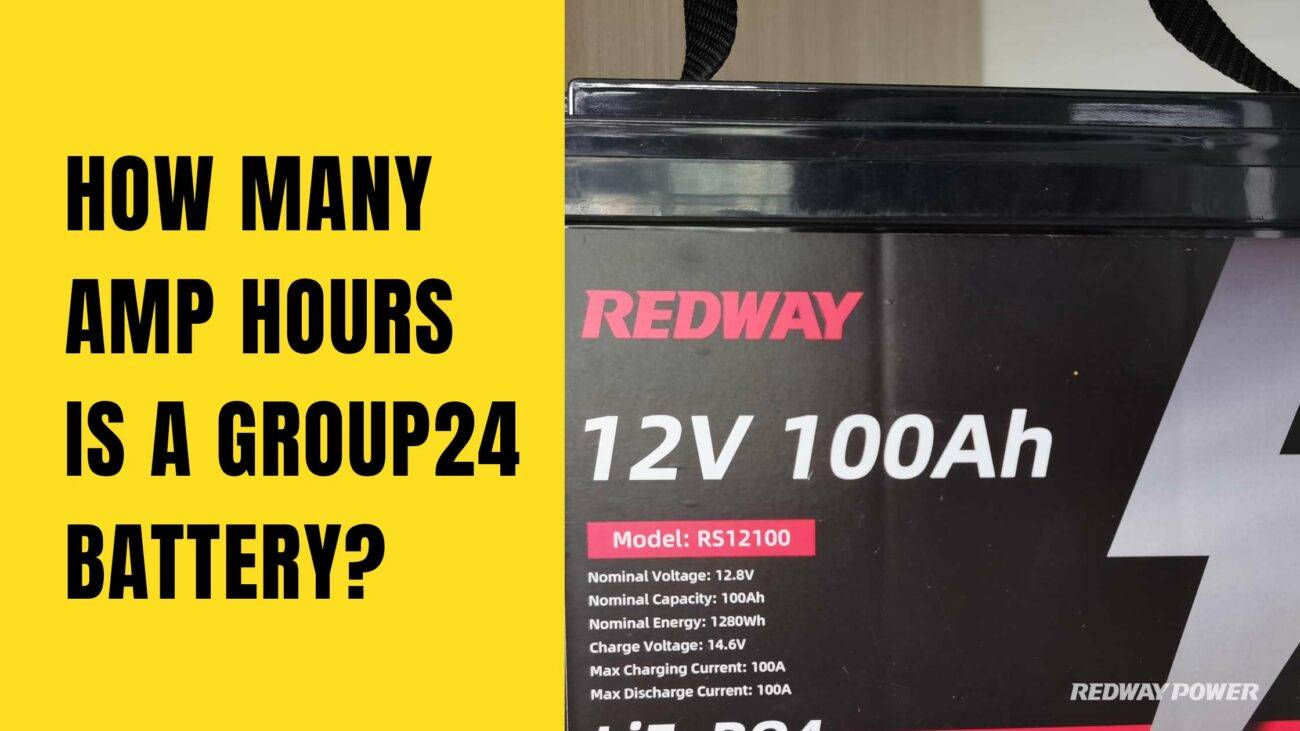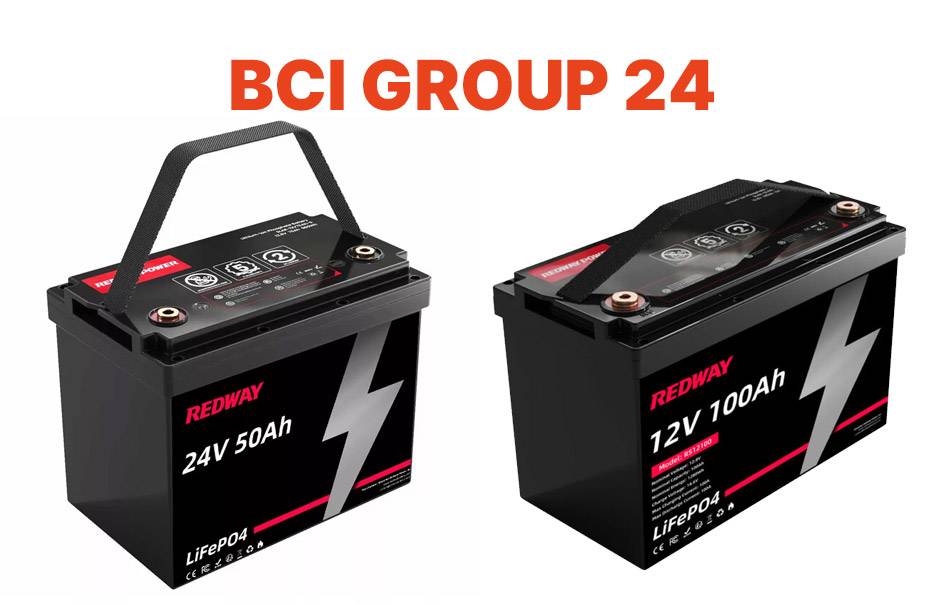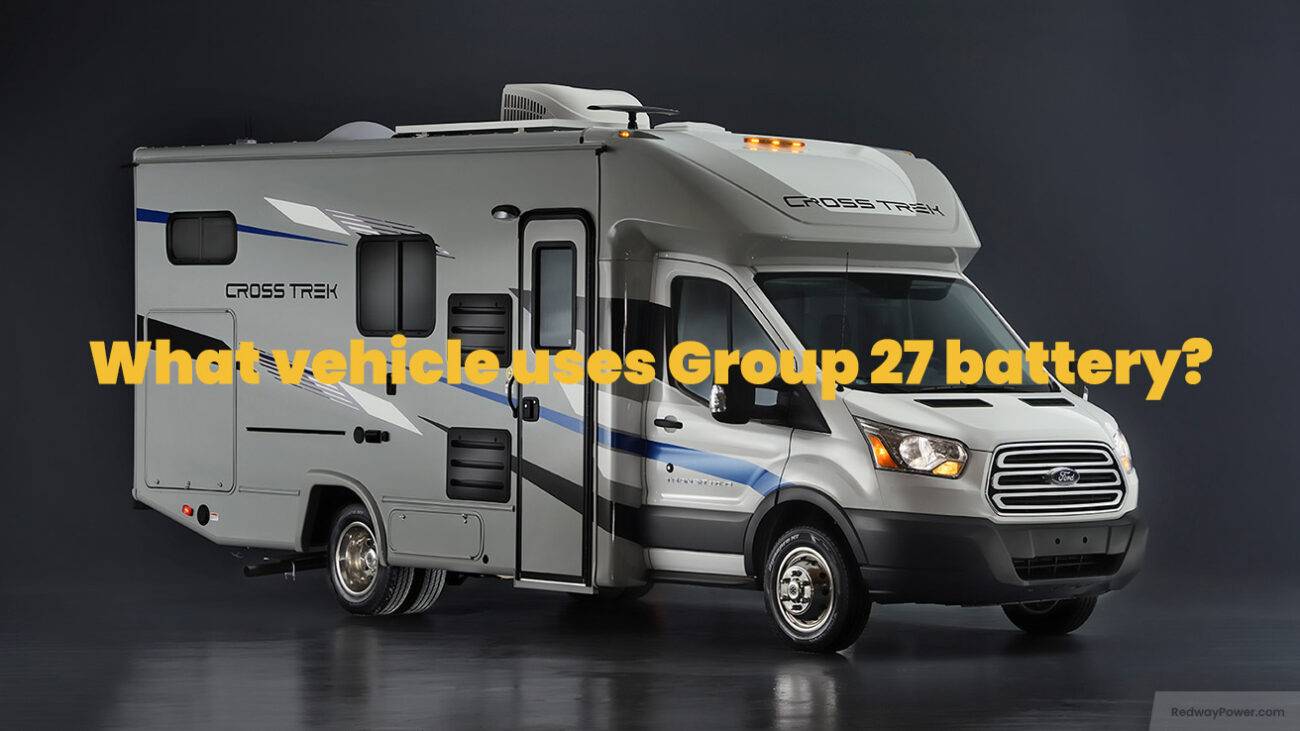- Lithium Golf Cart Battery
- Forklift Lithium Battery
-
48V
- 48V 210Ah
- 48V 300Ah
- 48V 420Ah (949 x 349 x 569 mm)
- 48V 420Ah (950 x 421 x 450 mm)
- 48V 456Ah
- 48V 460Ah (830 x 630 x 590 mm)
- 48V 460Ah (950 x 421 x 450 mm)
- 48V 460Ah (800 x 630 x 600 mm)
- 48V 460Ah (820 x 660 x 470 mm)
- 48V 500Ah
- 48V 560Ah (810 x 630 x 600 mm)
- 48V 560Ah (950 x 592 x 450 mm)
- 48V 600Ah
- 48V 630Ah
-
48V
- 12V Lithium Battery
12V 150Ah Lithium RV Battery
Bluetooth App | BCI Group 31
LiFePO4 Lithium
Discharge Temperature -20°C ~ 65°C
Fast Charger 14.6V 50A
Solar MPPT Charging - 24V Lithium Battery
- 36V Lithium Battery
- 48V Lithium Battery
-
48V LiFePO4 Battery
- 48V 50Ah
- 48V 50Ah (for Golf Carts)
- 48V 60Ah (8D)
- 48V 100Ah (8D)
- 48V 100Ah
- 48V 100Ah (Discharge 100A for Golf Carts)
- 48V 100Ah (Discharge 150A for Golf Carts)
- 48V 100Ah (Discharge 200A for Golf Carts)
- 48V 150Ah (for Golf Carts)
- 48V 160Ah (Discharge 100A for Golf Carts)
- 48V 160Ah (Discharge 160A for Golf Carts)
-
48V LiFePO4 Battery
- 60V Lithium Battery
-
60V LiFePO4 Battery
- 60V 20Ah
- 60V 30Ah
- 60V 50Ah
- 60V 50Ah (Small Size / Side Terminal)
- 60V 100Ah (for Electric Motocycle, Electric Scooter, LSV, AGV)
- 60V 100Ah (for Forklift, AGV, Electric Scooter, Sweeper)
- 60V 150Ah (E-Motocycle / E-Scooter / E-Tricycle / Tour LSV)
- 60V 200Ah (for Forklift, AGV, Electric Scooter, Sweeper)
-
60V LiFePO4 Battery
- 72V~96V Lithium Battery
- Rack-mounted Lithium Battery
- E-Bike Battery
- All-in-One Home-ESS
- Wall-mount Battery ESS
-
Home-ESS Lithium Battery PowerWall
- 24V 100Ah 2.4kWh PW24100-S PowerWall
- 48V 50Ah 2.4kWh PW4850-S PowerWall
- 48V 50Ah 2.56kWh PW5150-S PowerWall
- 48V 100Ah 5.12kWh PW51100-F PowerWall (IP65)
- 48V 100Ah 5.12kWh PW51100-S PowerWall
- 48V 100Ah 5.12kWh PW51100-H PowerWall
- 48V 200Ah 10kWh PW51200-H PowerWall
- 48V 300Ah 15kWh PW51300-H PowerWall
PowerWall 51.2V 100Ah LiFePO4 Lithium Battery
Highly popular in Asia and Eastern Europe.
CE Certification | Home-ESS -
Home-ESS Lithium Battery PowerWall
- Portable Power Stations
How Do BCI Group 24 and Group 27 Batteries Compare in Capacity and Size?

Understanding how BCI Group 24 and Group 27 batteries compare in terms of capacity and size is essential for making informed decisions about battery selection. Group 24 batteries typically offer a capacity range of around 70-85 amp-hours, while Group 27 batteries provide a higher capacity, usually between 90-110 amp-hours. This distinction affects their suitability for various applications.
What are BCI Group 24 and Group 27 Batteries?
BCI (Battery Council International) designates battery group sizes based on specific dimensions and performance characteristics. Group 24 batteries are commonly used in applications like RVs, boats, and some automotive uses, while Group 27 batteries are favored for larger applications requiring more power, such as larger boats, RVs, or backup power systems.Chart: Overview of BCI Battery Groups
| Feature | Group 24 | Group 27 |
|---|---|---|
| Typical Capacity | 70-85 Ah | 90-110 Ah |
| Dimensions (LxWxH) | Approximately 10.25″ x 6.75″ x 9″ | Approximately 12″ x 6.8″ x 9″ |
| Weight | About 40-50 lbs | About 50-60 lbs |
How Do the Capacities of Group 24 and Group 27 Compare?
The capacity difference between Group 24 and Group 27 batteries is significant. A Group 27 battery generally has a higher amp-hour rating, which means it can store more energy and provide power for a longer duration before needing a recharge. This makes it ideal for applications that require extended use or higher power demands.Chart: Capacity Comparison
| Battery Type | Minimum Capacity (Ah) | Maximum Capacity (Ah) |
|---|---|---|
| Group 24 | 70 | 85 |
| Group 27 | 90 | 110 |
What Are the Size Differences Between Group 24 and Group 27 Batteries?
The size difference between these two groups is also notable. While both types have similar heights, Group 27 batteries are longer than Group 24 batteries, which can affect installation space in certain applications. Understanding these dimensions is crucial when selecting a battery to ensure it fits within your equipment or vehicle.
Why Should You Choose One Battery Over the Other?
Choosing between a Group 24 and a Group 27 battery depends on your specific power needs:
- Opt for a Group 24 battery if you have lower power requirements or limited space.
- Choose a Group 27 battery if you need more capacity for longer runtimes or higher power demands.
What Applications Are Best Suited for Each Battery Type?
Each battery group serves different applications effectively:
- Group 24 batteries are suitable for:
- Smaller RVs
- Fishing boats
- Light-duty automotive applications
- Group 27 batteries excel in:
- Larger RVs
- Houseboats
- Off-grid solar systems
This distinction helps users select the right battery based on their usage scenarios.
How Can You Select the Right Battery for Your Needs?
To select the right battery, consider these factors:
- Power Requirements: Assess how much energy you need based on your usage.
- Space Constraints: Measure available space to ensure proper fit.
- Weight Considerations: Consider weight if portability is important.
- Budget: Factor in cost versus performance needs.
By evaluating these aspects, you can make an informed decision that meets your specific requirements.
Industrial News
Recent trends in battery technology emphasize efficiency and sustainability, leading to increased interest in deep-cycle batteries like those in BCI groups. Manufacturers are innovating to enhance energy density while reducing weight, making these batteries more suitable for various applications including electric vehicles and renewable energy systems. As regulations tighten around environmental impact, compliance with standards will also shape future developments.
Redway Power Views
“Understanding the differences between battery groups like BCI Group 24 and Group 27 is vital for consumers,” states industry expert John Doe. “As we transition towards more energy-efficient solutions, selecting the right battery can significantly impact performance and longevity.”
FAQ Section
What is the main difference between BCI Group 24 and Group 27 batteries?
The main difference lies in their capacity; Group 24 typically offers around 70-85 amp-hours, while Group 27 provides about 90-110 amp-hours.Which battery group should I choose for my RV?
If your RV has higher power demands or requires longer runtimes, opt for a Group 27 battery; otherwise, a Group 24 may suffice.Are there size differences between these two battery groups?
Yes, while both have similar heights, Group 27 batteries are longer than Group 24 batteries.How do I determine which battery is right for my application?
Consider your power requirements, available space, weight constraints, and budget to select the most suitable battery.This detailed comparison of BCI Group 24 vs. Group 27 batteries provides essential insights into their capacities, sizes, and applications to help consumers make informed decisions tailored to their needs.

What is the alternative to the group 24 battery?
Looking for an alternative to the Group 24 battery? You might want to consider the Group 27 battery as a viable option. While both batteries are commonly used in automotive and marine applications, the Group 27 offers a slightly larger size and higher capacity compared to the Group 24.
The Group 27 battery is known for its increased power output, making it suitable for vehicles or boats with higher energy demands. Its dimensions are typically larger than those of a Group 24 battery, providing more storage capacity for longer-lasting performance.
When choosing between a Group 24 and a Group 27 battery, consider your specific needs regarding power requirements and available space. The right choice will depend on factors such as vehicle type, usage frequency, and desired longevity of the battery’s charge.
In terms of alternatives within similar sizes, the transition from a Group 24 to a Group 27 can offer enhanced performance without sacrificing compatibility with your existing setup.
What are the dimensions of a group 27?

Group 27 batteries are commonly used in a variety of vehicles and marine applications. These batteries are known for their versatility and reliable performance. When it comes to dimensions, a typical group 27 battery measures approximately 12.06 inches in length, 6.81 inches in width, and 8.94 inches in height.
These dimensions may vary slightly depending on the manufacturer, but they give you a general idea of the size of a group 27 battery. It’s important to note that despite being larger than group 24 batteries, group 27 batteries can still fit into most standard battery compartments without any issues.
Whether you’re looking to replace an old battery or upgrade to a more powerful option, understanding the dimensions of a group 27 battery is essential for ensuring compatibility with your vehicle or equipment.
Are group 27 and 31 batteries the same size?
If you’re in the market for a new battery, you might be wondering about the differences between group 27 and group 31 batteries. Group 27 batteries are typically smaller than group 31 batteries, with dimensions of approximately 12.9 x 6.8 x 8.9 inches for a standard group size comparison.
On the other hand, group 31 batteries are larger and bulkier, measuring around 13 x 6.8 x10 inches on average. This difference in size can impact where and how these batteries can be installed in your vehicle or equipment.
When it comes to choosing between these two battery sizes, it’s essential to consider your specific power needs and space constraints carefully before making a decision.”
What is the difference between battery group size and capacity?
When it comes to batteries, understanding the difference between group size and capacity is crucial. Battery group size refers to the physical dimensions and terminal placement of the battery, determining if it will fit in your vehicle’s battery tray. On the other hand, capacity indicates how much charge a battery can store and deliver.

While two batteries may have the same group size, their capacities could vary significantly. A larger capacity means more power reserves for starting your engine or running accessories without draining the battery quickly. It’s essential to consider both factors when choosing a new battery for your vehicle.
Group size helps ensure that you’re selecting a compatible replacement while capacity determines how long your battery can sustain its performance under different conditions. Balancing these aspects will help you find the right battery to meet your specific needs and requirements.
What is the size difference between Group 24 and 35?
When comparing Group 24 and Group 35 batteries, the size difference is quite noticeable. Group 24 batteries typically measure around 10.25 inches in length, 6.8125 inches in width, and 9.4375 inches in height. On the other hand, Group 35 batteries tend to be smaller with dimensions of approximately 9.0625 inches in length, 6.8125 inches in width, and a height of about 8.875 inches.
The compact size of a Group 35 battery makes it a popular choice for vehicles where space is limited or where weight considerations are crucial. In contrast, the slightly larger footprint of a Group 24 battery provides more power capacity for applications that demand higher performance levels over an extended period.
Regardless of the size difference between these two battery groups, both options offer reliable starting power and deep-cycle capabilities for various automotive and marine applications.
What is the difference between Group 24 and 35?
When comparing Group 24 and Group 35 batteries, the key differences lie in their physical dimensions and capacity. Group 24 batteries are typically smaller in size compared to Group 35 batteries, making them more suitable for vehicles with limited space for battery installation. Additionally, Group 24 batteries generally have a lower capacity compared to Group 35 batteries, which means they may not provide as much power output or longevity.
When choosing between a Group 24 or a Group 35 battery, it’s essential to consider your vehicle’s requirements and available space. Selecting the right battery size and capacity will ensure optimal performance and reliability for your vehicle’s electrical system.























